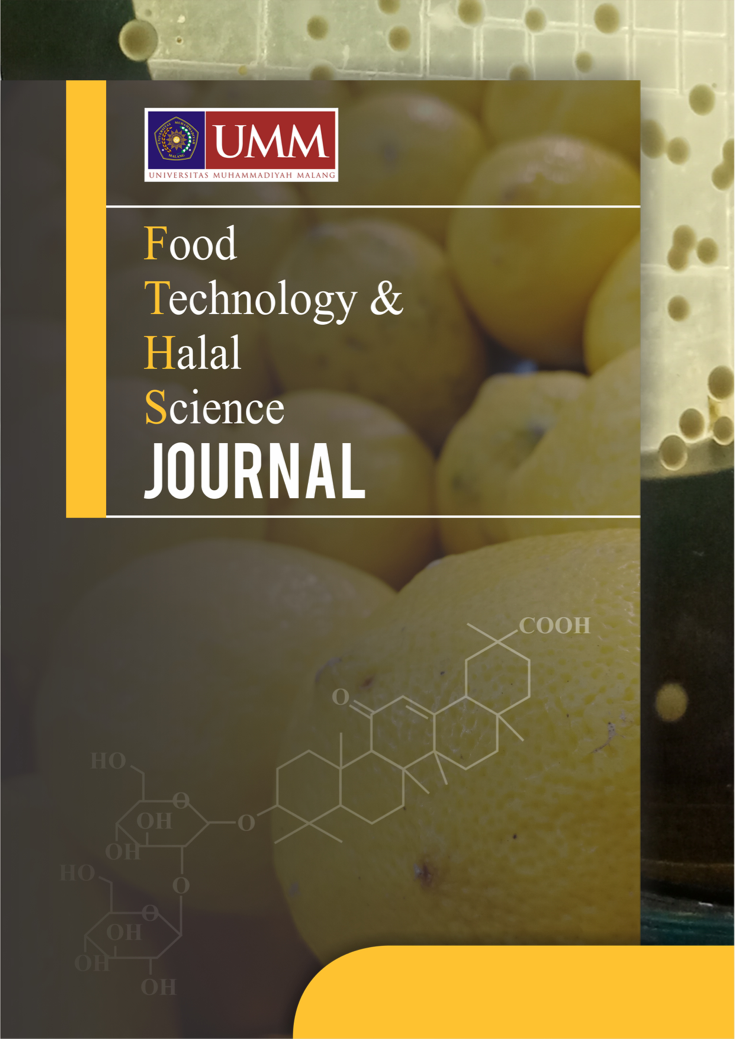The Characteristic of Porang Flour (Amorphophallus muelleri Blume) Purification Use Ethanol and The Application as Subtitution Agent on Chicken Sausage
DOI:
https://doi.org/10.22219/fths.v1i1.7545Keywords:
porang flour, ethanol, chicken sausageAbstract
Abstract: Pouring flour contains high glucomannan which can reach 65 %. This research purposed to analyze the physical and chemical of porang flour purification use ethanol and to describe the effect of the proportion of tapioca and porang flour addition to the physical, chemical, and organoleptic of chicken sausage. Randomized Complete Block Design was applied with two-phase. The first stage was the purification process used ethanol with different concentration (60%, 75%, and 90%). The second phase was the addition of orange and tapioca flour (gram) (0:20, 1:19, 2:18, 3:17, 4:16, 5:15, 6:14), all treatment was replicated 3 times. The results of the first process showed that there was a very significant difference effect to the glucomannan, rendemen, viscosity, and color (lightness and yellowish) of pouring flour. The best treatment was the purification by ethanol 90% with 11,2 % water content, 0,78% ash content, 58,20% glucomannan, 78, 11% rendered, and 3,33 dPas viscosity. The second treatment results described that there was a very significant effect of tapioca and pouring flour addition to the water content, ash content, fat, protein, carbohydrate, color intensity (L, a+, and b+), and organoleptic (taste, aroma, appearance, and favorite product) of chicken sausage.
Downloads
Downloads
Published
How to Cite
Issue
Section
License
Authors who publish with this journal agree to the following terms:
- Authors retain copyright and grant the journal right of first publication with the work simultaneously licensed under a Creative Commons Attribution License that allows others to share the work with an acknowledgement of the work's authorship and initial publication in this journal.
- Authors are able to enter into separate, additional contractual arrangements for the non-exclusive distribution of the journal's published version of the work (e.g., post it to an institutional repository or publish it in a book), with an acknowledgement of its initial publication in this journal.
- Authors are permitted and encouraged to post their work online (e.g., in institutional repositories or on their website) prior to and during the submission process, as it can lead to productive exchanges, as well as earlier and greater citation of published work (See The Effect of Open Access).










